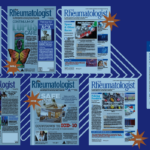The restorative effect of natural views on surgical patients undergoing elective cholecystectomy was cleverly examined in a study conducted in a small, suburban Pennsylvania hospital that focused on whether assignment to a room with a window view of a natural setting might have restorative influences. In the 1980s, patients were often kept in the hospital for several days following surgery to recover, and their confinement limited their access to outdoor environments almost entirely to views through windows. Twenty-three surgical patients assigned to rooms with windows looking out on a natural scene had shorter postoperative hospital stays, received fewer negative evaluative comments in nurses’ notes and consumed fewer opioid analgesics than 23 matched patients in similar rooms with windows facing a brick building wall.4
Another study led by the same author found similar results when studying patients admitted to a Swedish intensive care unit who were assigned to having either simulated nature views, such as forest or water scenes, abstract art works or blank sheets of paper posted on the walls of their rooms. Once again, anxiety levels were found to be reduced in the first group compared with the others, and in this study, too, opioid use was significantly reduced.5
Is hospital design an overlooked,yet critical, influence on the healing process?
Hospital Design Through the Ages
The architectural genealogy of hospitals begins with the Greek temples of Askelpios and Kos, where the sick placed faith in the power of sacred settings and ritual. By contrast, ancient Roman hospitals were developed for military purposes with plans based on barracks.6 As the Roman Empire turned to Christianity, the hospitals’ mission changed as the Church’s role in providing for the sick became firmly established. After 400 AD, monasteries were constructed to include accommodations for travelers, the poor and the sick. Charlemagne, King of the Franks, declared that hospitals be attached to every cathedral built during his reign.6
For centuries, hospitals were crowded, poorly ventilated facilities thick with patients stricken by contagious illnesses. With little physical separation between patients and staff, it is no wonder that an admission to hospital was often a fatal event.
About the time of the French Revolution, horrific conditions in the Hotel-Dieu, the preeminent Parisian hospital, spurred the need for change. French architects developed the concept of pavilion design, whose essential prerequisites were the creation of sufficient space between hospital wards to allow for light exposure, and long, drafty hallways and open chimneys, which together promoted the cross circulation of air.7,8 A major proponent of this design principle was the social reformer and founder of modern nursing, Florence Nightingale, whose nightmarish experiences caring for sick and injured British troops in the Crimean War convinced her of the need for such changes.


